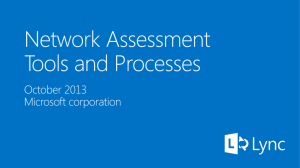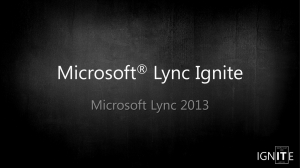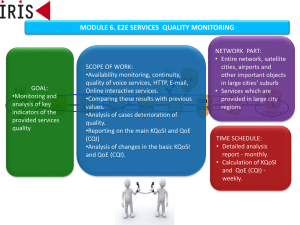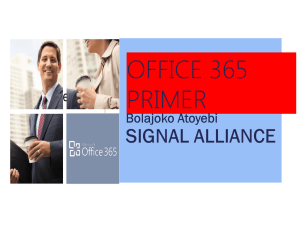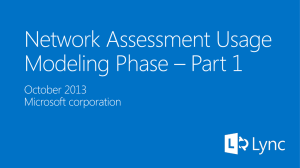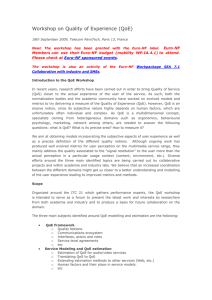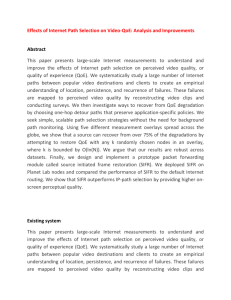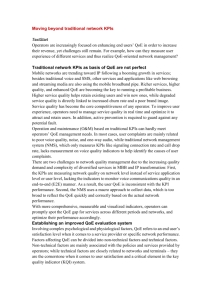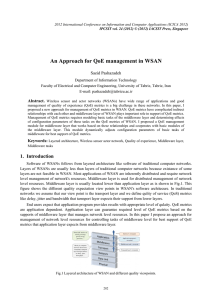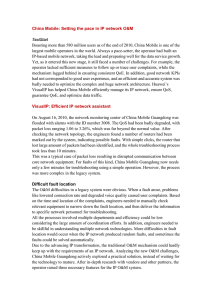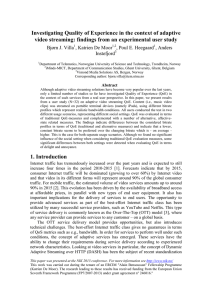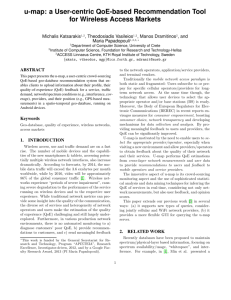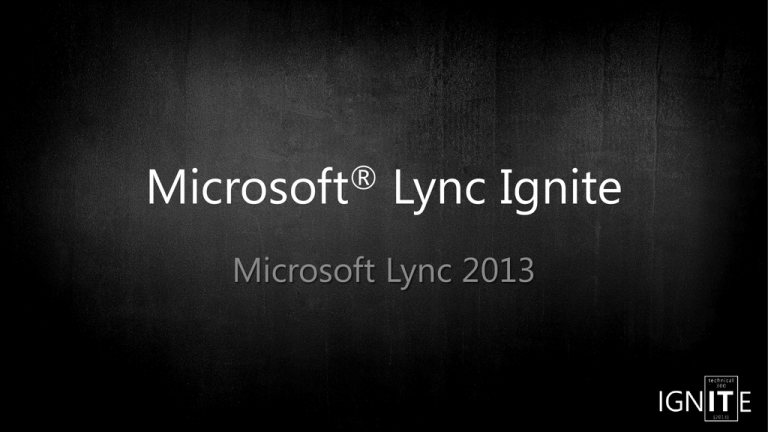
®
Microsoft
Lync Ignite
Microsoft Lync 2013
System Center Operations Manager (SCOM): SCOM is an alerting system providing data on server status
Performance Counters: Feed into SCOM and for general server performance monitoring. Includes active connections, processing of messages, failures
raised by server, latency
Event Logs: Used to report to SCOM, configuration state on server, security policy update, service availability
Synthetic Transactions: Automated tests to detect outages in service features (e.g. , Instant Messaging [IM], registration, presence)
Call Detail Records (CDR): CDR provides telemetry on usage patterns (e.g., call volume), call establishment (e.g., conference join)
QoE Metrics: media, network, endpoint
and connection metrics collected on
endpoint
QoE Metrics: Media, network, endpoint and connection metrics
collected on endpoint
QoE Metrics: Media, network, endpoint and connection metrics
collected on endpoint
UFD: Actionable notifications displayed to user
UFD: Actionable notifications displayed to user.
Network Bars: Indicator providing users with information when
network performance is causing media quality issues
Network Bars: Indicator providing users with information when
network performance is causing media quality issues
CDR/QoE
SQL Database
Front End Server
Lync Storage Service
Data Collection
Queue DB
Unified Contacts
Archival Processing
(IM, WebConf)
Monitoring Processing
(CDR/QoE)
SQL DB
Replication for
HA
Troubleshooting
In Lync 2013, improved video metrics
are aligned to the new video feature set
Reports will have both audio and video
media performance analysis
New QoE will enable administrators to
better identify problems with both audio
and video
Planning
QoE provides information on
Network performance and problem
identification
Audio performance issues
Video usage and performance issues
QoE data assists in
Network planning (e.g., wired and wireless
access requirements)
Server and general infrastructure
procurement decisions
Get-CsClsScenario global/<ScenarioName> |
Select -ExpandProperty Provider |
Format-Table Name,Level,Flags -a
Component Name
Level
MediationServer
Info
S4
Info
Sipstack
Info
TranslationApplication
Info
OutboundRouting
Info
InboundRouting
Info
UserServices
Info
COMMAND Description
-start
Starts trace session for given scenario. Mandatory option: scenario. Other valid option: duration
-stop
-query
-flush
Stops trace session for given scenario. Mandatory and only valid option: scenario
Query list of scenarios being traced. Valid options: None
Flush logs and make them available for searching immediately. Valid options: None
Update the duration active (nondefault) scenario needs to be traced for. Mandatory and only
valid option: duration
Search logs. Results are returned in a text file. Valid options: starttime, endtime, components, uri,
callid, phone, ip, loglevel, matchany, matchall, keepcache, correlationids
Will display command line usage along with scenario names
-update
-search
-?
OPTION
Description
-scenario
-duration
-matchall
-matchany
-starttime
-endtime
Scenario name (Valid scenario names were given earlier)
Duration (in minutes) to trace the given scenario for. Default duration: 24 hours
Specify this to require the search to match all criteria specified
Specify this to require the search to match any criteria specified. This is the default.
(timestamp) timestamp to search the log entries from
(timestamp) timestamp to search the log entries to
(fatal | error | warn | info | verbose | noise)
This is the least severe log level to search on. For example, if 'warn' is specified search will be
limited to 'warn', 'error' and 'fatal'
List of comma separated component names to restrict the search scope
Phone number scope for search command. This needs to be exact match
URI scope for search command. This needs to be exact match
Call id scope for search command. This needs to be exact match
IP address scope for search command. This needs to be exact match
-loglevel
-components
-phone
-uri
-callid
-ip
© 2013 Microsoft Corporation. All rights reserved. Microsoft, Windows, and other product names are or may be registered trademarks and/or trademarks in the U.S. and/or other countries.
The information herein is for informational purposes only and represents the current view of Microsoft Corporation as of the date of this presentation. Because Microsoft must respond to changing market conditions, it should not be interpreted to
be a commitment on the part of Microsoft, and Microsoft cannot guarantee the accuracy of any information provided after the date of this presentation. MICROSOFT MAKES NO WARRANTIES, EXPRESS, IMPLIED OR STATUTORY, AS TO THE
INFORMATION IN THIS PRESENTATION.

